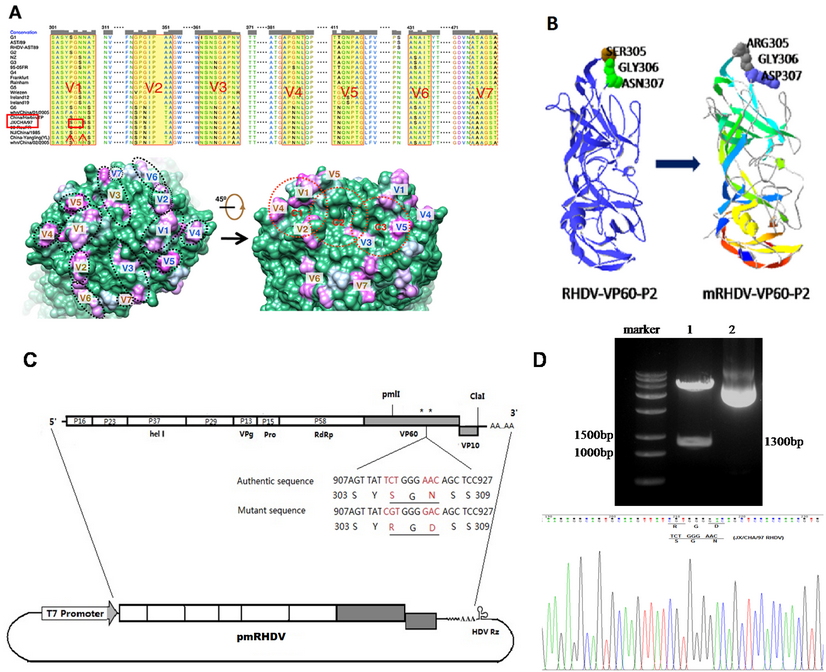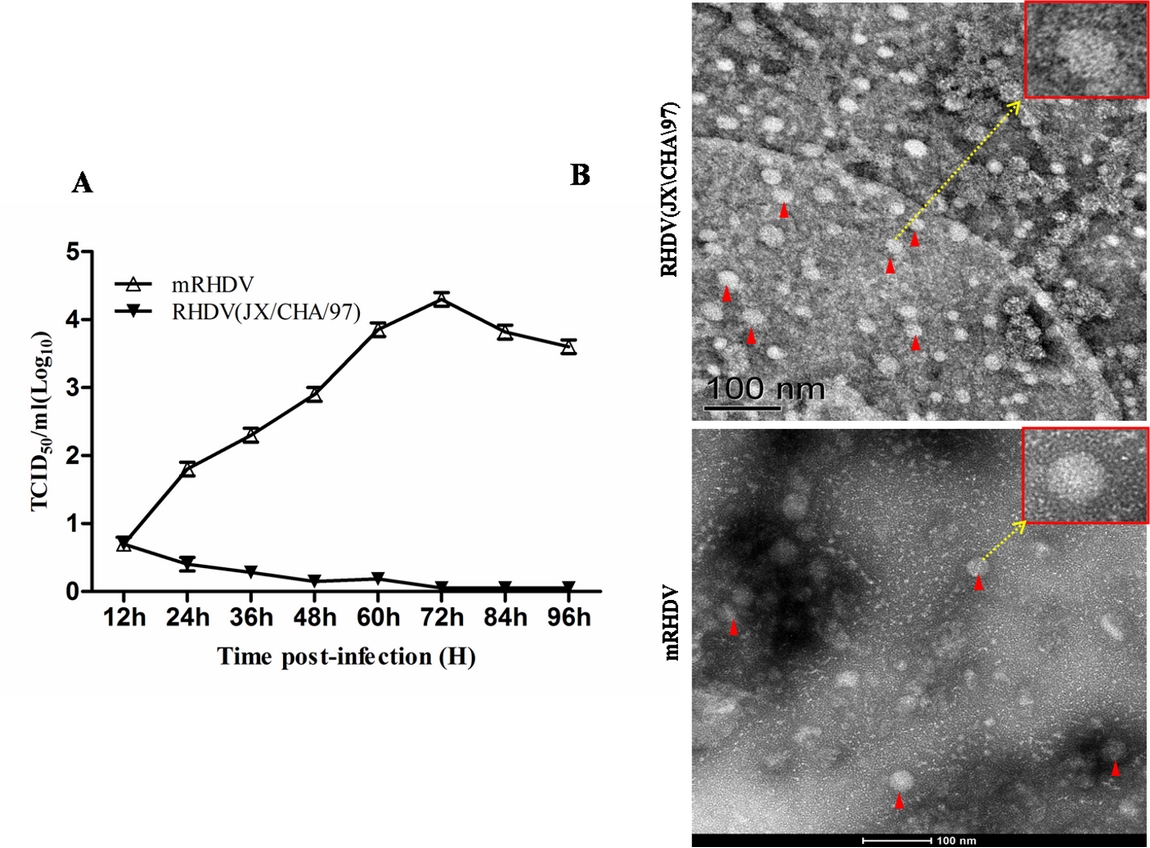
Recently, the key technology of Rabbit hemorrhagic disease virus (RHDV) proliferation in vitro was successfully resolved by Small Animal Infectious Disease team of Shanghai Veterinary Research Institute ( SHVRI ). The results have been published in Journal of Biological Chemistry.

RHDV belongs to the family Caliciviridae, a group of non-enveloped animal viruses that cause rabbit haemorrhagic disease (RHD), a highly contagious and lethal disease in rabbits, that is strongly associated with liver degeneration and diffuse hemorrhages and has a high mortality rate of up to 90%. In the past 30 years, a suitable cell culture capable of supporting authentic RHDV has not been established, which in turn has greatly impeded the progress of studies on RHDV life cycle, pathogenicity, and control. In this paper, we have successfully bypassed this obstacle by constructing a mutant RHDV (mRHDV) by using a reverse genetics technique. In short, by changing two amino acids (S305R, N307D), we produced a specific receptor-recognition motif (Arg-Gly-Asp; called RGD) on the surface of the RHDV capsid protein, which could be recognized by the intrinsic membrane receptor (integrin) of the RK-13 cells. In other words, the recused RHDV (mRDV) can utilize integrin as receptors and entry host cells. Various test results proved that the mRHDV not only proliferated in RK-13 cells, but also produced apparent cytopathic effects (CPE). Our study offers a novel strategy for overcoming the challenges of proliferating RHDV in vitro, and we also believe that this strategy could be applied to other RNA viruses that currently lack suitable cell lines for propagation such as hepatitis E virus and norovirus.

The first author of the study is Dr. Jie Zhu, the corresponding author is Prof. Guangqing Liu, the chief of Small Animals Infectious Disease Team of SHVRI. The study was supported by the National Natural Science Foundation and the key project of Agricultural Science and Technology of Shanghai.
More details are available on the bellow links: http://www.jbc.org/content/early/2017/04/05/jbc.M117.780924

